Biography
Peter Dayton (born 1955)
In “Surfboards by Clement Greenberg,” Dayton revisits the era of “The Endless Summer” (1966), the cult documentary that features two sun-bleached surfers traveling the globe in search of the perfect wave. He also tunes into Clement Greenberg’s formalist denouement, the period when his obsession with flatness in painting became such a powerful critique that artists used as it a prescription to launch Minimalism. Dayton’s paintings are high gloss, vertically oriented, rectangular, and striped. All resemble the longboards shaped by surfers like Robert August (one of the stars of “Endless Summer”). They also nod respectively in the direction of that famous painter of stripes, Kenneth Noland, who Greenberg championed as an example of post-painterly abstraction in the mid-sixties. By playing surf culture off of Greenberg’s high-minded aesthetics in his paintings, Dayton ends up with a wry, humorous commentary that gleefully revels in its embrace of consumerism and, thus, disrupts Greenberg’s still lingering legacy.
Dayton’s “surfboards” may hark back to the days when bronzed and blonde California boys strapped longboards to their Woodies and headed for Malibu, but Dayton (b. 1955) himself absorbed 1960s surf culture from his childhood home in Upper Brookville, New York, just thirty minutes by train from Penn Station. Then, as now, there was a direct pipeline of surf culture (music, skateboards, mini-bikes, and, even, slang) from Southern California to Long Island. Dayton’s brother Chip, for example, worked at the Outdoor Store Surf City USA in Hicksville’s Miracle Mall, then one of the world’s largest. The brothers’ daily uniform matched that of their California brethren: blue Chinos, Ked sneakers, and short-sleeve jersey shirts patterned with”of course”stripes.
While Dayton absorbed surfing’s sunny counterculture vibe, Clement Greenberg synthesized the main theoretical points of his earlier art criticism into cold theory. In “Modernist Painting, ” an essay first delivered over the radio in a Voice of America broadcast in 1960, Greenberg asserted that the history of painting since Manet had followed a logical, progressive evolution towards self-critical purity by emptying itself of all things not unique to it. To Greenberg, the sole aspect of painting that made it different from other art forms was its two-dimensionality. In 1964, Greenberg curated “Post-Painterly Abstraction,” an exhibition of grand scale paintings patterned with unmodulated areas of pure, lucid color that often bled into unprimed canvas. Highlights included the vertically oriented, striped paintings of Gene Davis, Morris Louis, and Frank Stella as well as a large, graphic sunburst by Kenneth Noland.
Noland started making the stripe paintings that Dayton’s surfboards mimic in 1964. Unlike those of his above-mentioned colleagues, Noland’s are horizontal” an aspect he emphasized in some pictures by putting them on stretchers as wide as twenty-four feet across. From 1978-81, Noland also made a number of “Surfboard” paintings. Noland covered these crystalline shaped canvases with irregular geometric forms to emphasize their contours and he sized them to human scale, making them just big enough for someone to lie down on and paddle out to catch a wave. Nonetheless, these artworks would never be mistaken for being anything other than what they are: paintings.
While Noland crafted these “surfboards,” Dayton studied painting, video, and performance at Boston’s Museum School of Fine Arts and fronted a punk rock band called La Peste. The group’s straightforward, stripped down sound was similar to the Ramones (for whom La Peste opened a few times) and their lyrics, many of which Dayton wrote, embraced the tongue in cheek wit of art school punk a la Talking Heads. Though punk is often conceived as creating a culture of negativity around it (its hard not to associate the movement with Sid Vicious’ girlfriend Nancy bleeding to death in New York’s Chelsea Hotel), its important to remember, for example, that one of the Ramones’ early recordings was a remake of the surf music standard, Surfin’ Bird.
It wasn’t until the early 90s that Dayton got back to painting. When he did, he made eye-popping, candy-colored collages of flowers cut from seed catalogues, which recall both Andy Warhol’s flower paintings and, because of their shiny surface, conjure up Jeff Koons’ inflatable rabbit made from stainless steel. This blending of high art concept and pop culture dosed with a punk sensibility is key to understanding the paintings in “Surfboards by Clement Greenberg.”
Dayton’s paintings, like those in Greenberg’s 1964 show, are vertically oriented, in order to draw the viewer’s attention to their flatness. Dayton, however, leans instead of hangs the surfboard-sized paintings against the wall, which turns them into three-dimensional sculpture a la John McCracken’s monochrome planks. This manner of display has the additional effect of making them look even more like surfboards”as you’d see them lined up for sale in a surf shop. To further enhance the sense of the paintings’ object-ness, Dayton has lacquered a surf decal on each” some have a special “Noland” decal, which are, interestingly, similar to the shape of Noland’s 1964 chevron paintings.
Though Dayton had already begun his surfboard series, he really dove into them after seeing Barnett Newman’s Concord (1949) at the Metropolitan Museum. Instead of responding to this painting by the Big Daddy of stripes (Newman referred to his as “zips”) as a sanctified example of painting as a “pure idea,” he saw it as a somewhat cheesy and sloppily rendered section of surfboard. The experience inspired Dayton to run back to his studio and make his own version. Like Newman, he painted the green background and added two parallel strips of masking tape down the center. When he was finished copying Newman’s image, Dayton added his mark”a Jacobs’s brand surf decal. This rather hilarious and celebratory gesture draws attention to the fact that even Newman’s art”here exemplified by presence of the masking tape”has its feet firmly rooted in the stuff of everyday life. Dayton’s paintings, thus, are in harmony with, rather than apart from or against, life. This concordance gives them a joyous quality also alluded to in the famous line from “Endless Summer”: “On any day of the year, it is summer somewhere in the world.”
Bridget L. Goodbody
April, 2006

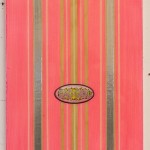 Bad Girl
Bad Girl
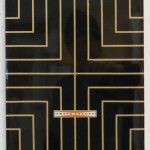 Stella #5 “Surf Beater”
Stella #5 “Surf Beater”
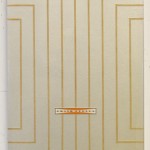 Silver Stella #4 “Big Breaker”
Silver Stella #4 “Big Breaker”
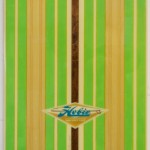 Hobie #2 “Linda’s Tune”
Hobie #2 “Linda’s Tune”
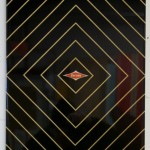 Jacobs/Stella
Jacobs/Stella
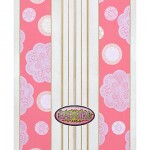 Bad Girl #5 Chrissie
Bad Girl #5 Chrissie
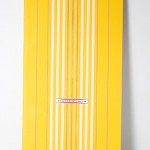 Gordon and Smith Everybody Up
Gordon and Smith Everybody Up
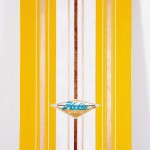 Hobie # 33 Barefoot in the Sand
Hobie # 33 Barefoot in the Sand
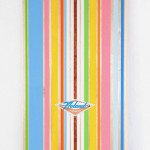 Noland #12 Draggin Wagon
Noland #12 Draggin Wagon
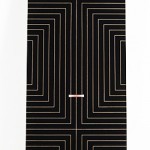 Stella #22 Lost World
Stella #22 Lost World